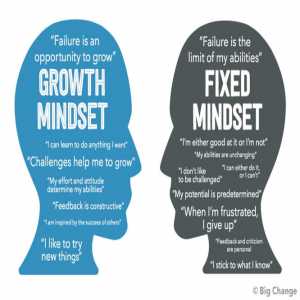Top 5 Tools For Designing Professional Presentations

Do you know a well-designed presentation can captivate viewers, enhance understanding, and ultimately drive desired outcomes? Creating a professional presentation is no longer just about using PowerPoint with a few basic slides.
However, crafting compelling presentations requires careful planning, thoughtful content, and effective use of design tools. This document delves into the world of presentation design, exploring a variety of tools that can help you elevate your presentations to new heights.
The goal is to empower you with the knowledge to choose the best tool for your specific needs, allowing you to create impactful and visually engaging presentations that leave a lasting impression on your audience.
This document explores five popular presentation design tools, providing an overview of their features, strengths, and weaknesses.

1.PowerPoint
Microsoft PowerPoint has long been the go-to presentation tool, known for its versatile features and extensive customization options. Microsoft PowerPoint remains one of the most widely used presentation tools worldwide. It is a powerful and versatile software that allows users to create professional presentations using a mix of text, images, animations, and multimedia elements. It also offers seamless integration with Microsoft Office tools and cloud storage.
Key Features:
- Wide range of customizable templates
- Advanced animation and transition effects
- Slide Master feature for consistency
- PowerPoint Designer for AI-powered design suggestions
- Integration with Microsoft Teams for collaboration
- Presenter Coach for rehearsal and feedback
Best For:
- Business professionals and corporate teams
- Educators and students
- Formal presentations requiring detailed content and data visualization
Pricing:
- Included with Microsoft 365 subscriptions (starting at $6.99/month)
- Free online version available with limited features
Its widespread use in corporate and academic settings makes it a reliable choice for users seeking professional and data-driven presentations.
2. Google Slides
Google Slides stands out for its cloud-based functionality, allowing teams to collaborate on presentations in real-time—no software installation required. Google Slides is a free, web-based presentation tool that offers seamless collaboration features.
It allows multiple users to work on a presentation simultaneously, making it an excellent choice for teams and remote work.
While it may not have the advanced design capabilities of other tools, its simplicity and accessibility make it a solid option for professional presentations.
Key Features:
- Real-time collaboration with multiple users
- Integration with Google Drive for cloud storage
- Easy sharing via links or embedded presentations
- Supports PowerPoint file formats
- Free templates available
- Works on any device with a browser
Best For:
- Teams working remotely or collaborating on presentations
- Business professionals needing cloud-based access
- Educators and students using Google Workspace
Pricing:
- Free for individual use
- Included with Google Workspace (starting at $6/month for business users)
3. Canva
Canva is a powerful online design tool that makes it easy for users to create professional presentations without needing advanced graphic design skills. With its drag-and-drop interface, thousands of templates, and access to an extensive library of images, icons, and fonts, Canva is an excellent choice for creating visually stunning presentations.
Key Features:
- Thousands of professionally designed templates
- Drag-and-drop editor for easy customization
- Access to free and premium stock images, illustrations, and icons
- Brand Kit to maintain consistency in colors and fonts
- Collaboration features for team projects
- Download options in multiple formats (PDF, PPTX, PNG, etc.)
Best For:
- Designers and marketers who want visually appealing slides
- Business professionals needing quick, professional presentations
- Teams collaborating on a project
Pricing:
- Free plan available
- Canva Pro: $12.99/month (includes premium templates and assets)
- Enterprise Plan: Custom pricing
4. Prezi
Unlike traditional slide-based presentations, Prezi offers a non-linear, zoomable interface, perfect for dynamic storytelling and complex topics. Prezi takes a unique approach to presentations by offering a non-linear, zoomable format. Instead of traditional slides, Prezi presentations allow users to move freely between topics and ideas, creating an engaging storytelling experience. This makes it perfect for TED-style talks, pitches, and educational presentations.
Key Features:
- Zooming interface for a fluid and engaging presentation style
- Pre-designed templates and themes
- Integration with video conferencing tools for live presentations
- Collaboration tools for team projects
- Cloud-based, accessible from any device
Best For:
- Storytelling presentations
- Marketing and sales pitches
- Interactive classroom lessons
Pricing:
- Free plan available with watermarked presentations
- Prezi Plus: $12/month
- Prezi Premium: $16/month (includes advanced analytics and offline access)
Keynote: Sleek and Polished for Apple Users
Apple’s Keynote is known for its sleek design, smooth animations, and high-quality aesthetics.
It offers an excellent choice for Apple users who want professional-looking slides. With seamless integration across Apple devices, Keynote allows users to create, edit, and present on Mac, iPad, or iPhone effortlessly.
Key Features:
- Elegant and modern templates designed for impactful presentations
- Seamless synchronization with iCloud for easy access across devices
- Intuitive animations and cinematic transitions for a polished look
- Compatibility with PowerPoint files for easy importing and exporting
- Real-time collaboration with team members using iCloud
- Apple Pencil support for drawing and annotation on slides
Best For:
- Apple users who want a sleek, intuitive presentation tool
- Professionals seeking high-quality animations and transitions
- Teams working within the Apple ecosystem
Pricing:
- Free for macOS and iOS users
Selecting the right presentation design tool is essential for crafting compelling and impactful presentations. Each platform comes with its own set of strengths and features, tailored to different needs and preferences.
No matter which tool you choose, focusing on clean design, engaging visuals, and clear messaging will ensure your presentations are professional and impactful. Try out different tools and find the one that fits your workflow best!
Author Bio
Writer comprises full-time and freelance writers that form an integral part of the Editorial team of Hubslides working on different stages of content writing and publishing with overall goals of enriching the readers' knowledge through research and publishing of quality content.
Article Comments
No Comments!
At present there are zero comments on this article.
Why not be the first to make a comment?
Similar Articles
Sponsor
Search Articles
Experts Column
Latest Articles
Featured Articles
Most Popular Articles












